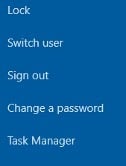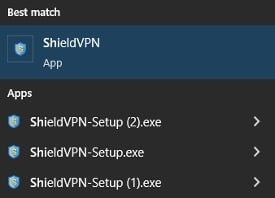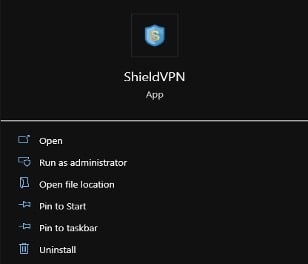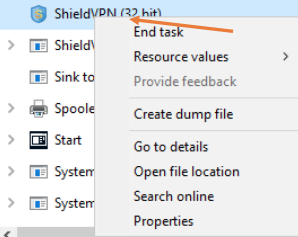Happening
How to Identify and Remove VPN Apps That Contain 911 S5 Backdoors

The FBI, the Defense Criminal Investigative Service, and the Department of Commerce’s Office of Export Enforcement have published a public service announcement (the “PSA”) for individuals and businesses to better understand and guard against the 911 S5 residential proxy service and botnet. The PSA is available at ic3.gov/Media/Y2024/PSA240529.
As explained in the PSA, 911 S5 began operating in May 2014 and was taken offline by the administrator in July 2022 before reconstituting as Cloudrouter in October 2023. 911 S5 was likely the largest residential proxy service and botnet with over 19 million compromised IP addresses in over 190 countries and confirmed victim losses in the billions of dollars.
Free, illegitimate VPN applications that were created to connect to the 911 S5 service are: MaskVPN, DewVPN, PaladinVPN, ProxyGate, ShieldVPN, and ShineVPN.
Unaware of the proxy backdoor, once users downloaded these VPN applications, they unknowingly became a victim of the 911 S5 botnet. The proxy backdoor enabled 911 S5 users to re-route their devices through victims’ devices, allowing criminals to carry out crimes such as bomb threats, financial fraud, identity theft, child exploitation, and initial access brokering. By using a proxy backdoor, criminals made nefarious activity appear as though it was coming from the victims’ devices.
The below information is intended to help identify and remove 911 S5’s VPN applications from devices or machines.
Before electing to use this information, users may want to consult with legal counsel and cybersecurity professionals, potentially including an incident response firm if they deem necessary, to explore all options and assist with any remediation efforts to avoid further harm by malicious software applications or botnets. The FBI makes no warranties or representations regarding the efficacy of this information.
Check for Running Services
1. Press Control+Alt+Delete on the keyboard and select the “Task Manager” option or right-click on the Start menu (Windows icon) and select the “Task Manager” option.

2. Task Manager should now be running. Under the “Process” tab, look for the following:
- MaskVPN (mask_svc.exe)
- DewVPN (dew_svc.exe)
- PaladinVPN (pldsvc.exe)
- ProxyGate (proxygate.exe, cloud.exe)
- ShieldVPN (shieldsvc.exe)
- ShineVPN (shsvc.exe)
Example of running processes for ShieldVPN and ShieldVPN Svc:

If Task Manager doesn’t detect any of these services, verify that by searching the Start menu for any traces of software labeled as “MaskVPN,” “DewVPN,” “ShieldVPN,” “PaladinVPN,” “ProxyGate,” or “ShineVPN.”
3. Click on the “Start” (Windows Icon) button typically found in the lower lefthand corner of the screen. Then, search for the following terms, which are the identified names of the malicious software applications:
- MaskVPN
- DewVPN
- ShieldVPN
- PaladinVPN
- ShineVPN
- ProxyGate


4. If one of the VPN applications is found, an uninstaller is sometimes located under the Start menu option of the VPN application. The example image below shows an instance where the uninstall option isn’t available.

5. If the application doesn’t contain an uninstall option, then follow the steps below to attempt to uninstall the application:
- Click on the Start menu (Windows button) and type “Add or remove programs” to bring up the “Add and Remove Programs” menu.

- Search for the malicious software application names.
An example image below shows the ShieldVPN application found within the “Add or remove programs” application list. Once you find the application in the list, click on the application name and select the “Uninstall” option.
- After the application is uninstalled, you can try to verify that the application has been removed by clicking on “Start” (Windows Icon) and typing “File Explorer.”
- Click on the drive letter “C:”—sometimes labeled as “Windows (C:)”—and navigate to “Program Files(x86).” Then, look for the malicious software application names in the list of files and folders.
![Click on the drive letter aC:a (Sometimes labeled as aWindows (C:)a) and navigate to Program Files(x86) and look for the malicious software application names in the list of files and folders.
For ProxyGate, navigate to C:\users\[Userprofile]\AppData\Roaming\ProxyGate.
If you do not see any folder labeled MaskVPN, DewVPN, ShineVPN, ShieldVPN, PaladinVPN, or Proxyate, then this particular malicious software application may not be installed.](https://www.fbi.gov/image-repository/911s5-shield-directory-022924.jpg/@@images/9f484d42-50ed-4148-9d5a-0993779d8c25.jpeg)
- For ProxyGate, navigate to “C:\users\[Userprofile]\AppData\Roaming\ProxyGate.”
- If you don’t see any folder labeled “MaskVPN,” “DewVPN,” “ShineVPN,” “ShieldVPN,” “PaladinVPN,” or “Proxygate,”
then this particular malicious software application may not be installed. - If a service was found running, but not found under the Start menu or “Add and Remove Programs,” then:
- Navigate to the directories described in directions 5d and 5e.
- Open “Task Manager.”
- Select the service related to one of the identified malicious software applications running in the process tab.
- Select the option “End task” to attempt to stop the process from running.


- Right-click on the folder named “MaskVPN,” “DewVPN,” “ShineVPN,” “ShieldVPN,” “PaladinVPN,” or “ProxyGate.”
- Select the “Delete” option.
- You can also select all files found within the folder and then select the “Delete” option.
- If you try to delete the folder—or to delete all files located inside the folder—and receive an error message, be sure that you’ve ended all processes related to the malicious software within in Windows Task Manager, as described in step 5g.
6. Based on the instructions found above, were you able to locate any of the listed files on your computer? Please click this link to select “Yes” or “No.” No other information is needed.

Happening
What is crowd strike and why is everyone talking about it today

CrowdStrike is a cybersecurity company, kind of like a digital knight in shining armor for businesses. They protect companies from cyberattacks and online threats.
Today, there’s a buzz around CrowdStrike because they’re dealing with a bit of a hiccup. One of their updates for Windows computers malfunctioned, causing some systems to act wonky. It’s important to note, however, that this wasn’t a cyberattack, more of a friendly fire situation. CrowdStrike is assuring everyone they’ve identified the problem, fixed it, and are patching things up as we speak.
Here’s a story for you:
It was a tense morning at DigiCorp, a tech startup. Alarms blared on laptops, throwing up error messages. Sarah, the head of IT, was fielding frantic calls from colleagues. Their data, their entire business, seemed to be on the fritz.
“Is it a ransomware attack?” someone shouted.
Sarah took a deep breath. “Let’s not panic. It could be anything. First, let’s isolate the problem and see if CrowdStrike can shed some light.”
Moments later, Sarah sighed with relief. CrowdStrike confirmed it wasn’t a malicious attack, but a glitch with their own update. A wave of laughter rippled through the stressed-out team.
“Well, that’s a relief,” Matt, a programmer, chuckled. “Though, maybe CrowdStrike needs to polish their knightly armor a bit.”
By lunchtime, CrowdStrike had rolled out a fix, and DigiCorp was back in business. Sarah sent a quick thank you note to their cybersecurity partners. Though it was a scare, it was a good reminder of how important CrowdStrike was in keeping their digital world safe.
Happening
What are the disadvantages of YouTube monetization?
YouTube has become a popular platform for content creators to share their work and potentially earn money. However, while monetization offers exciting opportunities, it also comes with its fair share of monetization challenges. In this article, we’ll explore the potential drawbacks of YouTube monetization and how they can impact creators.
Table of Contents
Understanding YouTube Monetization Challenges
Before diving into the disadvantages, it’s essential to understand that YouTube monetization isn’t always a straightforward path to success. Many creators face various hurdles and obstacles that can affect their ability to earn revenue consistently.
The Pressure to Produce Consistently
One of the primary monetization challenges creators face is the constant pressure to produce content. To maintain a steady income, YouTubers often feel compelled to:
- Upload videos frequently
- Keep up with trends
- Constantly engage with their audience
This pressure can lead to burnout and may compromise the quality of content over time.
Dealing with Algorithm Changes
YouTube’s algorithm plays a crucial role in content discovery and monetization. However, frequent changes to this algorithm can present significant monetization challenges:
- Videos may suddenly receive less exposure
- Ad revenue can fluctuate unpredictably
- Creators may need to adapt their content strategy frequently
Monetization Challenges: Advertiser-Friendly Content
To monetize videos effectively, creators must adhere to YouTube’s advertiser-friendly guidelines. This requirement can lead to several issues:
- Self-censorship
- Limited creative freedom
- Difficulty covering certain topics or niches
Some creators find these restrictions stifling and struggle to balance their artistic vision with monetization requirements.
The Unpredictability of Ad Revenue
Ad revenue, a primary source of income for many YouTubers, can be highly unpredictable. This volatility presents ongoing monetization challenges, including:
- Seasonal fluctuations in ad rates
- Changes in advertiser spending
- Impact of global events on ad budgets
These factors can make it difficult for creators to plan their finances and rely on YouTube as a stable income source.
Copyright Issues and Demonetization
Navigating copyright laws on YouTube can be tricky. Creators face monetization challenges when:
- Using copyrighted music or footage
- Dealing with false copyright claims
- Risking demonetization due to copyright strikes
These issues can result in loss of revenue and potentially affect a channel’s standing on the platform.
Competition and Market Saturation
As more people turn to YouTube for income, the platform becomes increasingly competitive. This saturation leads to monetization challenges such as:
- Difficulty standing out in a crowded market
- Lower ad rates due to increased supply of content
- Pressure to create clickbait or sensational content
Creators may find it harder to grow their audience and maintain sustainable revenue streams in this environment.
Privacy and Personal Life Impacts
Successful YouTube monetization often requires creators to share aspects of their personal lives, which can lead to:
- Loss of privacy
- Online harassment or stalking
- Difficulty separating work from personal life
These factors can take a toll on a creator’s mental health and overall well-being.
Dependence on a Single Platform
Relying solely on YouTube for income can be risky. Monetization challenges arise when:
- YouTube changes its policies
- Technical issues affect the platform
- A creator’s account faces suspension or termination
Diversifying income sources becomes crucial to mitigate these risks.
Conclusion
While YouTube monetization offers exciting opportunities for content creators, it’s important to be aware of the potential drawbacks. From algorithm changes to privacy concerns, these monetization challenges can significantly impact a creator’s journey on the platform.
By understanding these challenges, aspiring YouTubers can better prepare themselves for the realities of content creation as a career. It’s crucial to approach YouTube monetization with a balanced perspective, weighing the potential rewards against the possible disadvantages.
Ultimately, success on YouTube requires not just great content, but also the ability to navigate these monetization challenges effectively. With the right strategy and mindset, creators can work towards building a sustainable and rewarding presence on the platform.
Happening
Does Country Matter on YouTube for Monetization?
In the ever-expanding world of online content creation, YouTube monetization stands out as a way for creators to turn their passion into profit. However, a common question among aspiring YouTubers is whether their geographical location impacts their ability to monetize their content. Let’s dive deep into the intricacies of YouTube monetization and explore how your country of residence might affect your earning potential.
Understanding YouTube Monetization Basics
Before we address the country-specific aspects, it’s crucial to understand the fundamentals of YouTube monetization. The YouTube Partner Program (YPP) is the primary way creators can earn money directly from their videos. To join the YPP, creators must meet certain criteria:
- Have at least 1,000 subscribers
- Accumulate 4,000 watch hours in the past 12 months
- Comply with YouTube’s community guidelines and advertiser-friendly content policies
- Have an AdSense account linked to their channel
Once these requirements are met, creators can apply for the YPP and start earning revenue through various means such as ad revenue, channel memberships, and Super Chat.
The Global Reach of YouTube Monetization
YouTube is available in over 100 countries, with its monetization features accessible in many of these regions. However, the availability of specific monetization features can vary depending on your location. Here’s how your country can influence your YouTube monetization journey:
1. Eligibility for the YouTube Partner Program
While the basic requirements for joining the YPP are the same globally, some countries may have additional restrictions or requirements. It’s essential to check YouTube’s up-to-date policies for your specific region to ensure eligibility.
2. Available Monetization Features
Not all YouTube monetization features are available in every country. For example, channel memberships and Super Chat may be limited to certain regions. Always verify which features are accessible in your location to maximize your earning potential.
3. Ad Rates and CPM
CPM (Cost Per Mille) rates, which determine how much you earn per thousand views, can vary significantly between countries. Generally, advertisers pay more for views from countries with higher purchasing power, such as the United States, United Kingdom, and Canada. This means that creators in these countries may potentially earn more per view compared to those in developing nations.
4. Payment Thresholds and Methods
The minimum payment threshold and available payout methods can differ based on your country. While most regions have a $100 threshold before payments are issued, some countries may have higher or lower limits. Additionally, the options for receiving payments (e.g., wire transfer, Western Union, or checks) may vary.
5. Tax Implications
Your country of residence will determine the tax regulations applicable to your YouTube earnings. Some countries have tax treaties with the United States (where YouTube is based), which can affect withholding rates on your revenue.
Strategies to Overcome Geographical Limitations in YouTube Monetization
While your country can indeed impact your YouTube monetization potential, there are strategies to maximize your earnings regardless of location:
- Create Content with Global Appeal
- Optimize for English-Speaking Audiences
- Focus on Niche Topics
- Diversify Your Income Streams
- Collaborate with International Creators
- Stay Informed About Policy Changes
YouTube Monetization Success: Beyond Geographical Boundaries
In conclusion, while your country does play a role in YouTube monetization, it’s not the sole determining factor for success. The platform offers global opportunities for creators to earn revenue, albeit with some variations in features and potential earnings based on location.
By understanding these geographical nuances and implementing strategies to overcome potential limitations, creators from any country can build successful, monetized YouTube channels. Remember, the key to YouTube success lies in creating high-quality, engaging content that resonates with your target audience, regardless of where you or they are located.
Ultimately, your creativity, consistency, and ability to connect with viewers are the most crucial factors in your YouTube monetization journey. So, wherever you are in the world, focus on honing your craft, growing your audience, and adapting to the ever-changing landscape of online content creation.
-
SEO2 months ago
How to Increase Conversion Rate in 2024: 15 Effective Strategies
-
SEO2 months ago
What is SEO and how it works
-
SEO2 months ago
Is Google Keyword Planner worth it?
-
GamersX2 months ago
Call of Duty: Black Ops 6 Officially Announced, Full Reveal on June 9
-
SEO2 months ago
Tips for Successful SEO Optimization for Personal Trainers
-
SEO2 months ago
Which is better, Google Keyword Planner or SEMrush?
-
Artificial Intelligence2 months ago
Musk lumps OpenAI and Apple together
-
Technical Writing2 months ago
Why You Should Invest in SEO Training in Zambia










